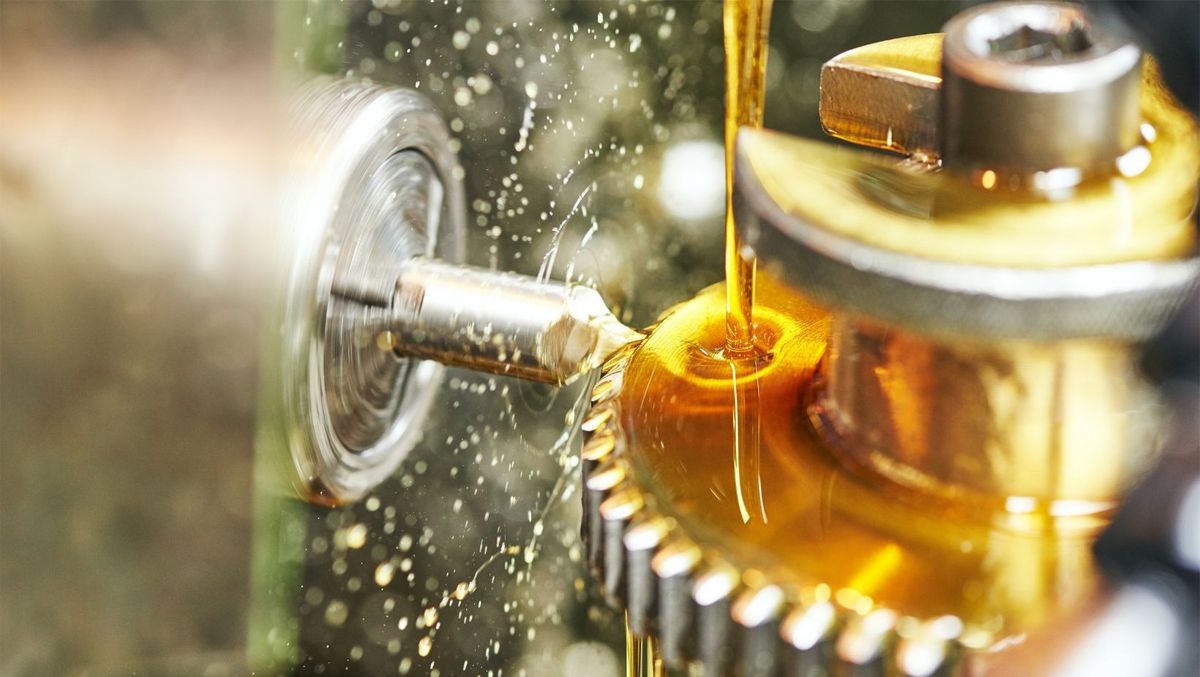Lubricating oil examination is a routine practice for evaluating oil contamination, oil health and machine health. Effective analysis of Lubricating Oil can determine the impurities and changes that can adversely affect machine health and reliability.
Oil impurities consist of water, fuel, air and soot debris such as engine section wear particles. All of these can result in the deteriorationof the engine lubricant. The occurrence of these solid impurities in engine oils results in increased friction coefficient, wear and frictional power losses as well as aggravating the surface roughness.
Pivotal responsibility of a Lubricant/Oil:
- Lubrication – Provide a protective layer between the machine apparatus.
- Cooling – Act as a medium for Heat Transfer.
- Sealing – Filling in irregular surfaces
- Protection from corrosion & oxidation.
- Reducing and moderating of components under high stress.
Ideal equipment execution starts with regular lube oil analysis. Accurate and reliable results can retain high levels of machine performance.
Lubricating Oil analysis service empowers you to:
- Effectively assess equipment and lubricant condition
- Eliminate breakdowns
- Improve equipment reliability
- Save spare and replacement cost
- Boost productivity
Recommended tests for various type lubricating oil are:
Test Parameters | Testing Methods |
Appearance | ASTM E2680 |
Water Content | ASTM D6304, ASTM D95 & ASTM D1533 |
ASTM Colour | ASTM D1500 |
Density | IS 1448 (Part-16)/ ASTM D1298 & ASTM D4052 |
Flash Point | IS 1448 (Part-69 & Part-21) / ASTM D92 & ASTM D93/ ISO 2592 & ISO 2719 |
Pour Point | IS 1448 (Part-10)/ ASTM D97/ ISO 3016 |
Sulphur Content | ASTM D4294 & ASTM D5453/ISO 8754 |
Total Chlorine | ASTM D4929, D6443 & IP 510 |
Glycol Content | ASTM D4291 |
PCB Content | ASTM D4059 & D6160 |
Kinematic Viscosity (KV) | IS 1448 (Part-25)/ ASTM D445/ ISO 3104 |
Viscosity Index | IS 1448 (Part-56)/ ASTM D2270 |
Acidity | IS 1448 (Part-2) |
Total Acid Number (TAN) | IS 1448 (Part-1)/ ASTM D974, D664 & D3339/ IP 139 |
Total Base Number (TBN) | ASTM D2896 & D4739 & D5984/ IP139 |
Carbon residue Ramsbottom | IS 1448 (Part-8)/ IP 14 |
Conradson Carbon Residue | ASTM D189 |
Micro Carbon Residue | ASTM D4530 |
Ash | IS 1448 (Part-4)/ ASTM D482 |
Sulphated Ash | ASTM D874 |
Water separability (demulsibility), | ASTM D1401 |
Soot (FTIR) | ASTM E2412 & D7844 |
Foam Tendency/ Stability | IS 1448 (Part-67) |
Oxidation Stability | IS 1448 (Part-106)/ IP 280 |
Sulphation (FTIR) | ASTM D7415 & E2412 |
Nitration (FTIR) | ASTM E2412 |
Nitrogen Content | ASTM D4629 & D5762 |
Copper Strip Corrosion | IS 1448 (Part-15)/ ASTM D130 |
Rust Preventing Characteristics | IS 1448 (Part-96) |
Heptane/ Toluene Insoluble | ASTM D893 |
Wear metals and additive Elements (Mg, Na, Ba, Cu, B, Pb, Mn, Ni, Al, As, Cd, Ca, Fe, P, Zn, Cr, Sn, Si, V and other trace elements) | ASTM D5185 |
Particle Count (NAS Value) | ISO 4406/ NAS 1368 |
Analytical Ferrography | ASTM D7690 |
Optimal equipment performance starts with consistent machinery fluid testing and analysis. TUV India thus comes in picture to help you determine the Operating Efficiency of your Machines. Our State of art NABL accredited Petroleum Chemical & Gas testing laboratory at Jamnagar is well equipped to help with all lube oil testing requirements.
About The Author

pcgindia@tuv-nord.com
